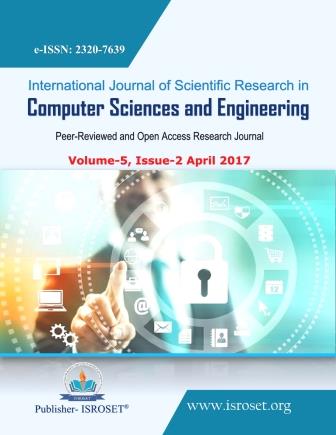Full Code Rate Complex Non-Orthogonal STBCS for Eleven Transmit Antennas
Keywords:
Coderate, fading, MIMO, non-OSTBC, 2G, 3G, SISO, QOSTBCAbstract
Alamouti is Pioneer of Complex Orthogonal STBCS for two transmit branch diversity with code rate one. Later Tarkoh investigated for four to nine transmit antennas with code rate 1/2. Jafarkhni proposed for non orthogonal STBCS four transmit antennas with code rate one. O. Tirkkonen and A. Hottinen Proposed space-time block codes for eight transmit antennas of code rate ½. Recently five, six, seven and eight transmit antennas generalized complex orthogonal space-time block codes of code rate with 2/3, 2/3,5/8, and 5/8 proposed. Bao.T. et. al. investigated OSTBC with maximal rates and minimal decoding for eight transmit antennas. The theory of OSTBC was further developed by Khaled A.M. et.al. who achieved full rate transmission for OSTBCs for six and eight antennas. This paper intends new matrix non-OSTBC for eleven transmit antenna with full code rate.
References
G. J. Foschini and M. J. Gans, "On limits of wireless communications in a fading environment when using multiple antennas”, Wireless personal communication, Vol.6, Issue.3, pp.311-315, 1998.
S. M. Alamouti, "A simple transmitter diversity scheme for wireless Communications”, IEEE J. Sel. Areas Commun., Vol. 16, Issue.8, pp.1451-1458, 1998.
V. Tarokh, H. Jafarkhani and A.R. Calderbank, “Space-time Block Codes from Orthogonal Designs”, IEEE Trans. Inform. Theory, Vol.45, No.5, pp. 1456-1467, 1999.
Hai-quan Wang, Xiang-Gen Xia, "UPage No.( er Bounds of Rates of Space-Time Block Codes from Complex Orthogonal Designs", IEEE Trans. Inform. Theory, Vol. 49, pp.2788-2796, 1995.
H. Jafarkhani, "A quasi-orthogonal space-time block code", IEEE Trans. Commun., Vol. 49, Issue.1, pp. 1-4, 2001.
O. Tirkkonen and A. Hottinen, “Square-matrix Embeddable Space-time Block Codes for Complex Signal Constellations”, IEEE Trans. Inform. Theory, Vol.48, No. 2, pp. 1122–1126, 2002.
W. Su, X.G. Xia, “Two generalized complex orthogonal space-time block codes of rates 7/11 and 3/5 for 5 and 6transmit antennas” information theory, IEEE transactions Vol. 49, Issue.1, pp. 313-316.
W. Su, X.-G. Xia, and K. J. R. Liu, “A systematic design of high-rate complex orthogonal space-time block codes,” IEEE Commun. Lett., Vol. 8, no. 6, pp.380–382, 2004.
K. Lu, S. Fu, and X.-G. Xia, “Closed-form designs of complex orthogonal space-time block codes of rates (k+1)/(2k) for 2k−1 or 2k transmit antennas,” IEEE Trans. Inform. Theory, Vol. 9, no. 12, pp. 4340–4347, 2005.
X.B. Liang, “orthogonal designs with maximal rates” Trans. Inform theory Vol.49 , Issue.1, pp.2468.2503, 2003
M.A.I. Jewel, M. Rahman, “Full Rate General Complex Orthogonal Space-Time Block Code for 4-Transmit Antenna”, 5th International Conference on Wireless Communications, Networking and Mobile Computing, Beijing, pp.1-4, 2009.
N.S. Murthy, S.S. Gowri, B. Prabhakara Rao, “Two New General Complex Orthogonal Space-Time Block Codes for 6 And 16 Transmit Antenna”, International Journal of Electronics and Communication Engineering & Technology, Vol.3, Issue.2, 2012.
N. S. Murthy, S.S. Gowri, “Full Rate General Complex Orthogonal Space-Time Block Code for 8-Transmit Antenna", ELSEVIER, SCIVERSE Science Direct Procedia Engineering in IWIEE 2012, China, 2012.
B. Tao, J.D. Xu, H.S. Zhang, "High-rate low-delay complex orthogonal space-time block codes for eight transmit antennas", International Conference on Electronic Measurement & Instruments, Beijing, pp.174-177, 2009.
Q. Shen, A. Wang, Z. Nie, “A Novel space-time block code design with high rates”, in 12th IEEE international Conference ICCT , USA, pp.76 – 79, 2010.
A.M. Khaled, A. M. Ghuniem, H. Y. Soliman, "A full rate, new families of general complex orthogonal space-time block code for 6 and 8 antennas", Radio Science Conference (NRSC), Cairo, pp.194-201, 2014.
Downloads
Published
How to Cite
Issue
Section
License

This work is licensed under a Creative Commons Attribution 4.0 International License.
Authors contributing to this journal agree to publish their articles under the Creative Commons Attribution 4.0 International License, allowing third parties to share their work (copy, distribute, transmit) and to adapt it, under the condition that the authors are given credit and that in the event of reuse or distribution, the terms of this license are made clear.







